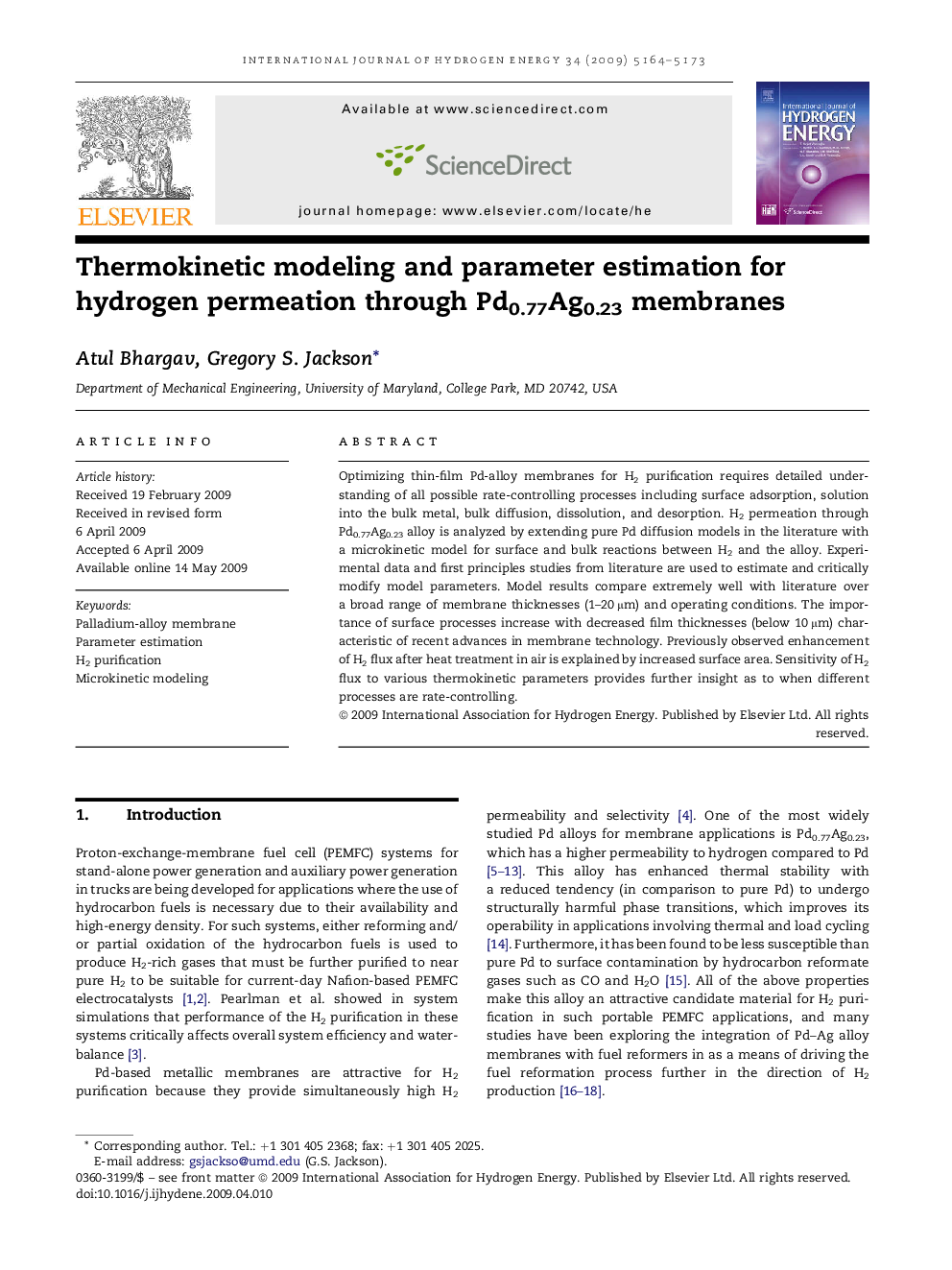| کد مقاله | کد نشریه | سال انتشار | مقاله انگلیسی | نسخه تمام متن |
|---|---|---|---|---|
| 1278827 | 1497630 | 2009 | 10 صفحه PDF | دانلود رایگان |

Optimizing thin-film Pd-alloy membranes for H2 purification requires detailed understanding of all possible rate-controlling processes including surface adsorption, solution into the bulk metal, bulk diffusion, dissolution, and desorption. H2 permeation through Pd0.77Ag0.23 alloy is analyzed by extending pure Pd diffusion models in the literature with a microkinetic model for surface and bulk reactions between H2 and the alloy. Experimental data and first principles studies from literature are used to estimate and critically modify model parameters. Model results compare extremely well with literature over a broad range of membrane thicknesses (1–20 μm) and operating conditions. The importance of surface processes increase with decreased film thicknesses (below 10 μm) characteristic of recent advances in membrane technology. Previously observed enhancement of H2 flux after heat treatment in air is explained by increased surface area. Sensitivity of H2 flux to various thermokinetic parameters provides further insight as to when different processes are rate-controlling.
Journal: International Journal of Hydrogen Energy - Volume 34, Issue 12, June 2009, Pages 5164–5173